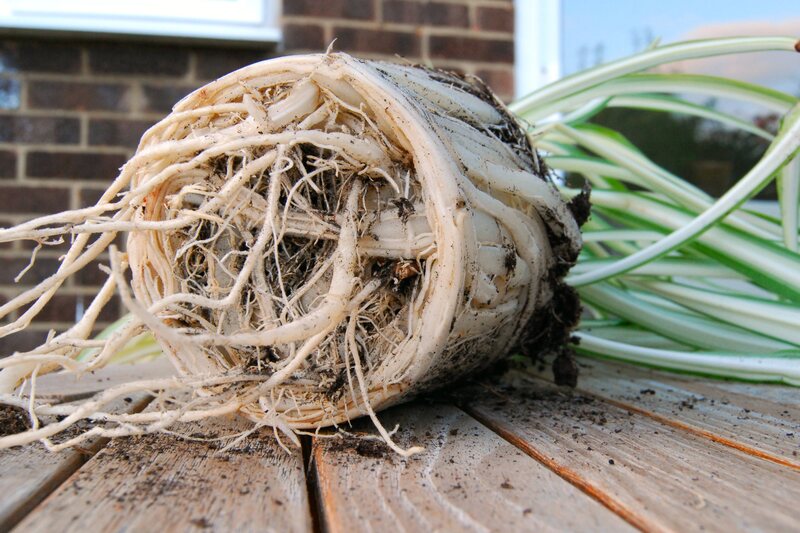Guide to Developing a Safe and Vibrant Kids' Garden
Posted on 14/09/2025
Guide to Developing a Safe and Vibrant Kids' Garden
Introducing children to gardening opens a world of discovery, creativity, and hands-on learning. Building a safe and vibrant kids' garden not only encourages outdoor activity but also helps kids develop an appreciation for nature, responsibility, and healthy living. Whether you're a parent, teacher, or community leader, this comprehensive guide will explore the key steps and tips for creating a kid-friendly garden that is both secure and inspiring.
Why Create a Kids' Garden?
Gardening offers a plethora of benefits for children. These benefits surpass mere recreation and stretch into holistic physical and mental development. Here's why it's a great idea to set up a children's safe garden in your home or community:
- Encourages Physical Activity: Kids dig, plant, water, and harvest, staying active without screen time.
- Builds Healthy Eating Habits: Children are more likely to eat fruits and vegetables if they grow them themselves.
- Develops Responsibility: Kids learn to care for plants and understand the importance of regular attention.
- Promotes Learning: From biology to ecology and math, gardening is a natural classroom supporting STEM learning.
- Reduces Stress: Spending time outdoors surrounded by plants lowers anxiety and boosts mood.

Planning Your Kid-Friendly Garden
Before you break ground, careful planning is essential for ensuring a safe garden for kids that also brims with color and activity. Follow these steps to start the process:
1. Selecting the Perfect Location
- Visibility: Choose a site easily visible from the house or a common area to supervise children.
- Sunlight: Most vegetables and flowers require 6-8 hours of sunlight daily. Observe your yard for the sunniest spots.
- Accessibility: Ensure children can reach the garden safely, avoiding steep slopes, busy roads, or dense shrubbery.
2. Planning the Garden Layout
- Size: Start with a manageable plot, such as a 4x8-foot raised bed or a series of containers for younger children.
- Paths: Create clear, wide paths with child-friendly surfaces such as wood chips or stepping stones to prevent slipping.
- Zones: Designate areas for planting, play, and relaxation to balance learning with fun.
3. Choosing Safe Gardening Materials
Opt for non-toxic, durable materials when constructing beds, borders, or trellises. Avoid treated lumber containing chemicals. Instead, use cedar, redwood, or food-safe recycled plastics for raised beds. Safety always comes first!
Ensuring Garden Safety for Children
No guide to developing a kids' garden is complete without prioritizing safety. Follow these tips to create a secure environment:
- Fence the Area: Install a low fence or natural border (such as shrubs or sunflowers) to define boundaries and keep out pets.
- Avoid Hazardous Plants: Steer clear of poisonous or toxic plants like foxglove, oleander, or castor bean. Always research plant toxicity before purchasing seeds or transplants.
- Practice Tool Safety: Provide age-appropriate, blunt-edged tools and teach children to use them correctly. Store all tools out of reach after use.
- Check for Allergens and Stings: Be mindful of children's allergies, and avoid plants that attract stinging insects if there are concerns.
- Non-Slip Surfaces: Use shredded bark or rubber mulch in high-traffic areas to minimize slipping, especially after rain.
First Aid Preparedness in the Garden
Keep a well-stocked, waterproof first aid kit nearby. Teach children basic steps like washing hands after gardening, and how to address minor scrapes or bites. Preparedness saves the day.
Elements of a Successful Children's Garden
Developing a thriving vibrant and safe kids' garden means integrating elements that delight the senses and stimulate curiosity.
1. Sensory Experiences
- Taste: Plant sweet cherry tomatoes, peas, strawberries, or edible flowers.
- Touch: Include lamb's ear for softness and ornamental grasses for tickling sensations.
- Sight: Bright colors can be achieved with marigolds, sunflowers, nasturtiums, and painted garden stones.
- Scent: Lavender, mint, and lemon balm invite children to smell the garden.
- Sound: Wind chimes, rustling bamboo, or water features add audio interest.
2. Easy-to-Grow and Safe Plants for Kids
Choose resilient plants with low maintenance and minimal hazards. Here are some vibrant, kid-friendly options:
- Sunflowers: Tall, sturdy, and fast-growing, sunflowers are wonderful for kids to track progress and harvest seeds.
- Nasturtiums: Their edible, peppery leaves and vibrant blooms are perfect for little hands.
- Radishes: Quick to harvest and satisfying to pull from the soil.
- Snap Peas and Cherry Tomatoes: Sweet, fun to pick, and perfect for snacking.
- Mint: Hardy, fragrant, and can even be grown in pots to prevent spreading.
- Lettuce: Sprouts fast and provides ongoing harvest for salads.
- Strawberries: A favorite treat that comes back year after year.
3. Engaging Features and Activities
- Fairy Houses or Gnome Gardens: Spark imagination with a miniature world built among the plants.
- Garden Art Projects: Painted rocks, homemade plant labels, or whimsical wind mobiles personalizing the space.
- Watering Stations: Supply colorful watering cans and accessible hoses so kids can help care for plants.
- Bug Hotels: Teach ecology by creating safe habitats for beneficial insects with sticks, pinecones, and bricks.
Designing a Kids' Garden for Year-Round Fun
With thoughtful design, your children's vibrant garden can be a joy across all seasons:
- Spring: Begin with seed sowing, watching sprouts emerge, and identifying new insects.
- Summer: Harvest fresh produce, set up shaded play nooks, and encourage water play for cooling off.
- Fall: Collect leaves for crafts, plant bulbs for spring blooms, and enjoy root vegetable harvests.
- Winter: Plan future plantings, start seeds indoors, and create bird feeders to support wildlife.
Maintaining Your Kid-Safe Garden
Maintenance is essential to keep your vibrant kids' garden safe and flourishing. Here are some best practices:
- Regular Inspections: Check for any damaged tools, fences, or surfaces that could cause injury.
- Weed and Pest Management: Use natural mulches and introduce beneficial insects. Avoid chemical pesticides and fertilizers.
- Composting: Teach kids about composting food scraps and yard waste -- a green habit for both garden health and environmental awareness.
- Seasonal Refresh: Rotate crops and renew soil with organic matter each season to maintain plant health.
Engaging Kids in Garden Care
Assign simple, age-appropriate garden chores like watering, picking weeds, or harvesting. Recognition for effort and progress fosters confidence and a sense of ownership in young gardeners.
Making the Most of the Learning Experience
A children's educational garden is brimming with opportunities for discovery. Encourage learning with thematic activities:
- Science: Explore plant life cycles, observe insects, or measure rainfall and sunlight.
- Art: Sketch plants, create garden journals, or press flowers for crafts.
- Math: Count seeds, measure plant growth, or calculate harvest yields.
- Literacy: Read books about plants, write stories inspired by the garden, or label plants with creative names.
Inclusivity and Community in Kids' Gardening
A safe and vibrant kids' garden can serve as a hub for building community and nurturing connections. Here's how you can keep the garden inclusive:
- Accessible Spaces: Raised beds for wheelchair users and seats for those who need them.
- Group Activities: Organize garden days, workshops, or art projects that involve whole families or classrooms.
- Celebrate Diversity: Plant crops or flowers from different cultures, encouraging children to learn about food and flora from around the world.
Tips for Keeping Young Gardeners Engaged
- Keep Tasks Short and Sweet: Short bursts of activity match kids' attention spans better than long work sessions.
- Encourage Exploration: Allow children to choose some of their own seeds or flowers, and give them freedom to explore safely.
- Celebrate Milestones: Mark plantings, blooms, or first harvests with small celebrations or certificates.
- Mix in Play: Incorporate hidden treasures, scavenger hunts, or garden games to keep the space playful.
Overcoming Common Challenges
Building a children's safe and vibrant garden isn't without hurdles. Here are a few common setbacks and how to address them:
- Pests: Encourage natural predators, use fine netting over crops, and reinforce with regular inspections.
- Harsh Weather: Provide shade cloth for intense sun, mulch to retain moisture, and windbreaks in exposed areas.
- Lack of Interest: Rotate tasks, allow kids more choice, and invite friends or family to join in the fun.
- Limited Space: Vertical gardens, container gardening, or window boxes can fit even on patios or balconies.

Resources and Further Inspiration
- Children's Gardening Books: Look for age-appropriate guides that make the science and art of gardening accessible.
- Local Garden Clubs: Many communities offer programs or support for family and youth gardening projects.
- Online Communities: Join social groups or forums for sharing tips, troubleshooting, and celebrating your successes.
- School Garden Networks: Many schools have resources and grants to support educational gardens -- ask about starting one if it doesn't exist!
Conclusion: Sowing the Seeds for Lifelong Growth
A safe and vibrant kids' garden is more than just a plot of land -- it's a magical place for children to learn, play, and grow. With careful planning, inclusive design, and a focus on engagement and safety, you can cultivate not only beautiful plants but also curiosity, responsibility, and joy in young gardeners. Start small, use this guide as your foundation, and watch both your garden and the children involved thrive season after season.
So grab your shovels, gather your seeds, and begin your journey to developing a garden where safety, vibrancy, and wonder bloom together!

